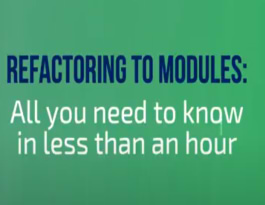Go Module Versioning: Evolution Through Today @ GoSG Meetup – 2021
March 16, 2021
2 min read
This event is brought to you by Go Singapore. GoSG is a meetup for the Go programming enthusiasts in Singapore.
Name: Mitali Bisht (Software Engineer, Partner Engineering @ JFrog)
Topic: Go Module Versioning: Evolution Through Today
In this talk, Mitali will be sharing the changes in the Go Module Versioning System through the present day. We will examine how is it different from other dependency management systems. Some of the questions that will be addressed include: How can you identify major versions for a module when Go Client does not update it automatically?
How do you approach version validation and correcting your pseudo-versions to upgrade your project from 1.12 to 1.15? What changes have been added to Go Modules through version from 1.15?
As an experienced software engineer, Mitali has designed, developed, and led challenging software projects involved cloud technologies, Big data, web, DevOps in both large and small tech companies. She has also been engaging with Go Community authors to make them aware of the security aspect of their modules and help them to resolve it. She loves exploring and adopting new technologies.
Apart from the tech side of the Bay area, she spends her spare time gardening, enjoying nature while reading novels, learning nutritious food recipes for kids. She also volunteers whenever to get time to provide knowledge of computer and technology to the adult people preparing for GED to get jobs.






